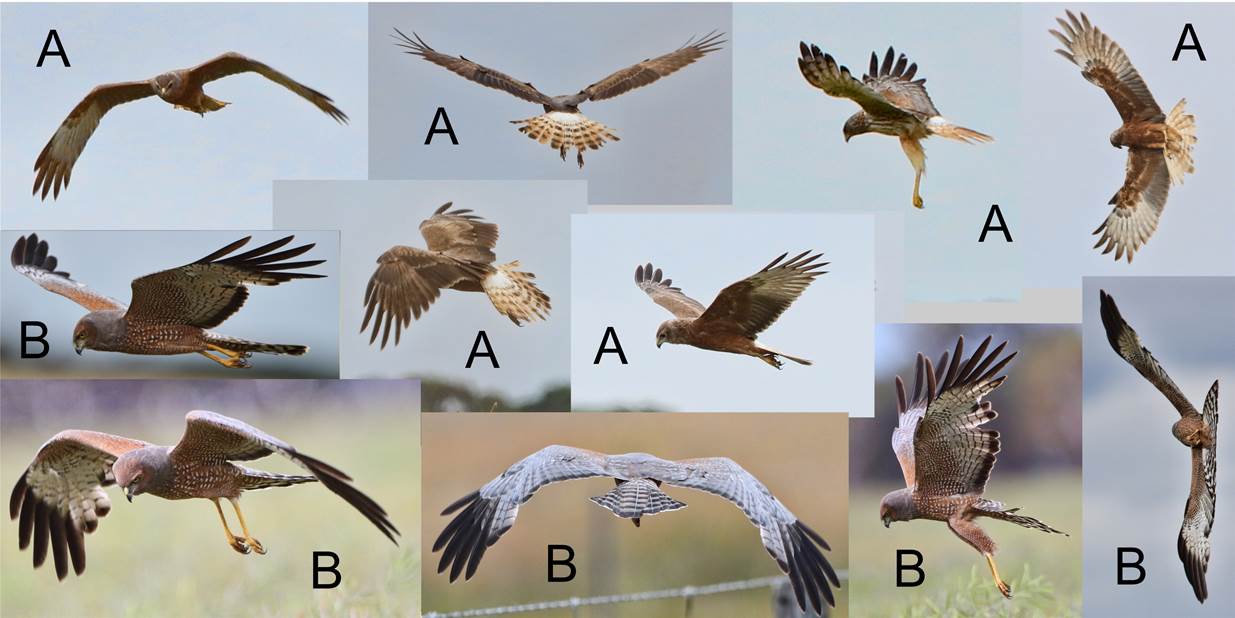Yes nice set of photos. Actually it is the young (not the adult) Spotted Harrier
that is the hard one to pick. Stephen Debus pointed out that the at all ages is spotted or scalloped pattern along the upper wing (as in along the humerus) but the Swamp Harrier is at all ages relatively unmarked. That requires a reasonable upper side in flight
or side or back view when perched. I wonder which of the Swamp Harrier pics (A) are the same bird. I think from the dark fairly unmarked underparts the top right and maybe top left and middle right row 2 are young birds. Young Swamp Harriers don’t
have the distinguishing pale rump.
The second last photo of the
Spotted Harrier is really unusual in live bird photos as you can see bird’s knee and outline of the femur, almost to the hip.
I think if the
Black Kite
was to get to Tasmania and New Zealand
it would have done so by now.
Philip
From: Geoffrey Dabb [
Sent: Sunday, 15 November 2015 12:45 PM
To:
Subject: [canberrabirds] A visit to Werribee (3)
This has always been a prime area for open-country raptors. A relatively recent development is that Black Kites have colonised the Werribee plains and are probably now the most common raptor. I saw 4 at the one time over the little-used
Avalon airport. This highly successful species, abundant in places like Cairo and Mumbai, has a range stretching from Finland to southern Victoria. Its extension to Tasmania and New Zealand is surely only a matter of time.
Harriers are also common. On almost any visit it is possible to see both Swamp and Spotted Harriers. Below is a comparison of the old-male grey-backed Swampie (A) with the similar Spotted (B). With binoculars in reasonable light it is
possible to see the distinguishing spotted underparts. Failing that, even a poor view at a distance might show the distinguishing pale rump of species A. Locally, I have only found Swampies at Rose Lagoon but recently the Spotted has been more likely at Jerra
Wetlands.


